10 things you never knew about German reunification
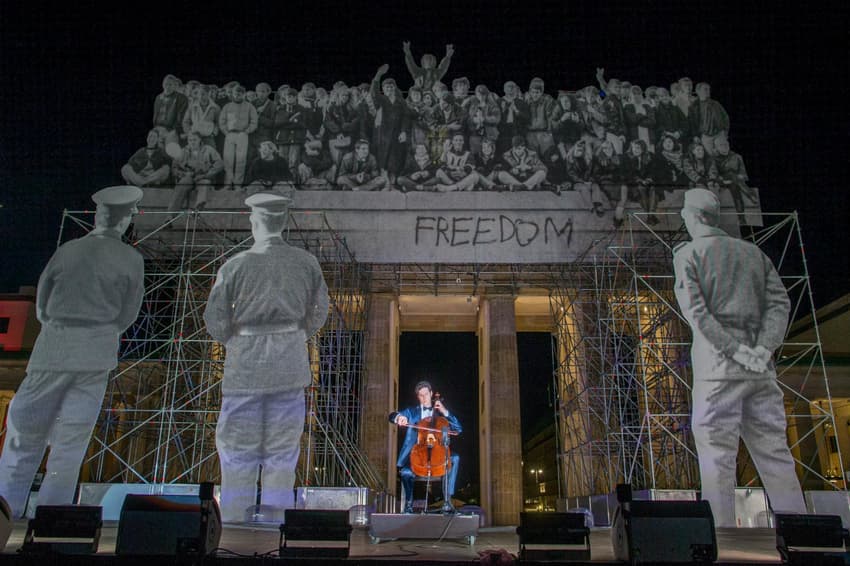
German Unity Day falls on October 3rd. Did you know these facts about reunification and German Unity Day?
Germany was divided for almost half a century after the Second World War, with the eastern part becoming a socialist ally of the USSR, while the west was a democratic ally of the USA.
On October 3rd, 1990, that finally came to an end when east and west were officially reunified.
1. The fall of the Berlin Wall was an accident
Despite increased pressure on East German authorities to increase freedom of movement between East and West, no-one woke up on November 9th, 1989 expecting to see people tearing down the wall that evening. In fact, on that day the government had decided to placate protesters by announcing new, laxer travel regulations.
But thanks to Günter Schabowski, the newly appointed government spokesman, history took a different turn.
Schabowski had been put in charge of the press conference, but hadn't been properly briefed on what to say.
Asked by a reporter when the regulations were to come into effect - officially on the following day, and the process would include a long visa-application process - he hesitated, before responding: “Ab sofort” – “Right away.”
Within hours, tens of thousands had gathered at the wall, and the rest is history.
2. A former chancellor tried to rob Germans of their day off
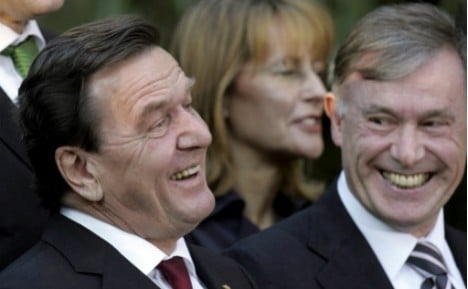
Gerhard Schröder and Horst Köhler. Photo: DPA
In 2004, former German Chancellor Gerhard Schröder tried to remove German Unity Day as a national holiday.
In a letter defending the plan, Schröder wrote: “the holiday should not be abolished, but moved to the first Sunday of October every year.”
Citing economic reasons, he explained he was committed to reducing the number of national holidays. Unsurprisingly, this wasn’t a very popular suggestion, and it remained on October 3rd!
3. Bonn remained the seat of government after reunification
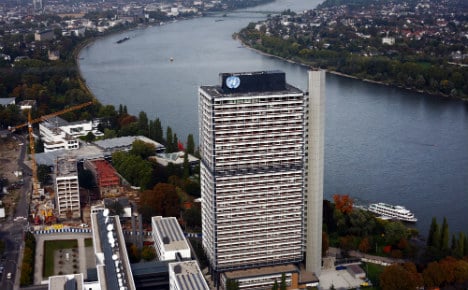
View of Bonn. Photo: DPA
Although Berlin had become the federal capital of the new Germany, the government didn’t decide to move the Bundestag (parliament) from Bonn until the following year, and they only just voted in favour of the motion.
On June 20th, 1991, the decision to move to Berlin was approved by 338 votes 320. The Parliament and Chancellery only moved to Berlin in 1999, but some departments and many government officials still operate out of the former West German capital.
4. Reunification almost killed the East German ‘Ampelmännchen’
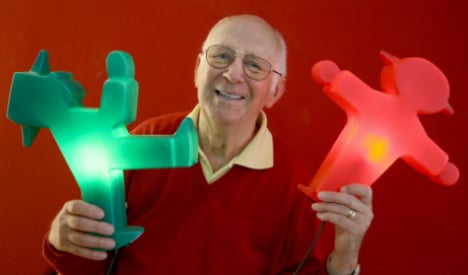
Traffic psychologist Karl Peglau with his two iconic designs. Photo: DPA
Starting in 1990, there were attempts by the authorities to replace the East German pedestrian crossing lights with standardised ones.
The distinctive man - known as the Amplemännchen and modelled on a photograph of former GDR leader Erich Honecker in a straw hat - became a cult symbol. After a series of protests, the decision was made to keep the 'Ampelmännchen'. It is now also a very successful tourist merchandise range.
5. Unity day was first supposed to be a month later
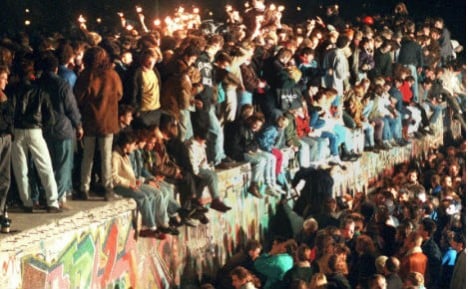
Germans climbing onto the wall on 9th November, 1989. Photo: DPA
November 9th, the day the Berlin Wall came down was originally proposed as the day of unity.
Despite November 9th being a momentous historical landmark in 1989, it is clear why October 3rd was finally picked instead.
Sometimes referred to as ‘Schicksalstag’ (Fateful Day), November 9th has an eerie connection with major events in German history - not all of them good.
On November 9th, 1918, government minister Philipp Scheidemann proclaimed the creation of the Republic from a balcony in the Berlin Stadtschloss, a crucial act in Germany's transition away from monarchy.
In 1923, November 9th marked the day that Hitler and the NSDAP attempted to take control of Munich, often called the Munich Beer Hall Putsch. And, on the same day in 1938, the Nazi pogrom known as ‘Kristallnacht’ (The Night of Broken Glass) saw Jewish shops and synagogues attacked, and the death of hundreds of Jews.
6. Merkel was working for the socialist government at the time
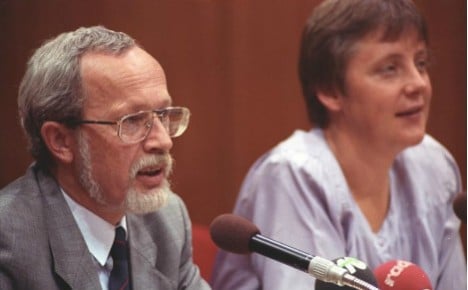
Former East German Prime Minister Lothar de Maizière and Angela Merkel. Photo: Bundesarchiv / Settnik, Bernd / wikimedia commons
Until 3rd October 1990, Angela Merkel actually worked for the last East German government.
Having joined the political movement ‘Democratic Awakening’ in early 1990, the future Chancellor was later that year appointed deputy spokesperson to Lothar de Maizière, the last leader of East Germany.
7. The West swallowed the East
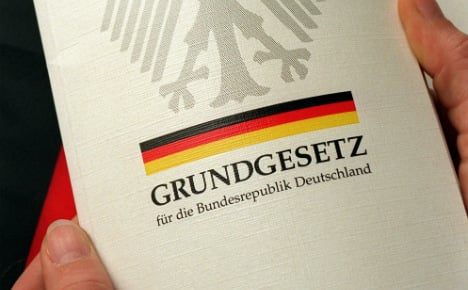
Grundgesetz - The German Basic Law. Photo: DPA
The reunification of Germany was not legally a merger, but an absorption of the East German states into West Germany.
October 3rd saw the dissolution of the GDR (East Germany), and in accordance with Article 23 of the German Basic Law, each of the five eastern Bundesländer had to vote to join the Federal Republic of Germany. This was chosen in preference over the other option of an official union of the two states, because a speedy unification was seen as vital during this economically unstable time.
8. Britain and France weren't happy
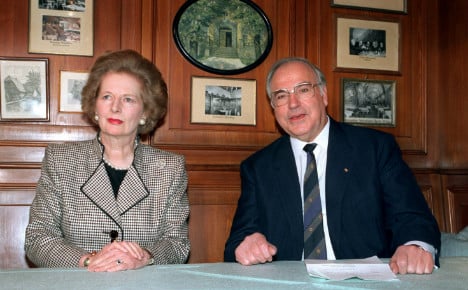
Margaret Thatcher and Helmut Kohl. Photo: DPA
Most of West Germany's allies had officially supported German reunification for decades, but as the GDR's collapse began to look more plausible, many states began to express opposition to the idea, at least in private. Many of western Europe's leaders still feared the resurgence of a powerful unified Germany.
The UK's prime minister at the time was one of the leaders to voice this concern more publicly. In a discussion with Mikhail Gorbachev, Margaret Thatcher stated: “We don’t want a united Germany […] such a development would undermine the stability of the whole international situation”.
The personal advisor to French President Francois Mitterand also shared this opinion: “France by no means wants German reunification.”
9. Putin was a KGB agent in Germany at the time
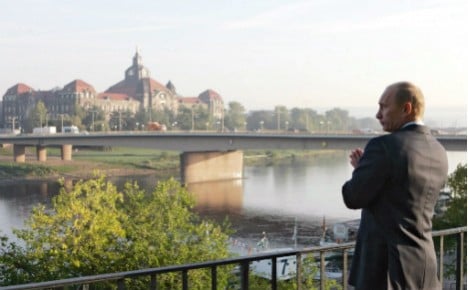
Putin looks over the River Elbe in Dresden on a return trip. Photo: DPA
From 1985 to 1990, Vladimir Putin served in the local Soviet intelligence office in Dresden. The night the wall fell had a very sudden effect on him, as he recalled to biographers: “I realised that the Soviet Union was ill. It was a fatal illness called paralysis. A paralysis of power.”
Putin still speaks fluent German, even once addressing the Bundestag (German parliament) auf Deutsch.
10. The official celebrations take place in a different city each year
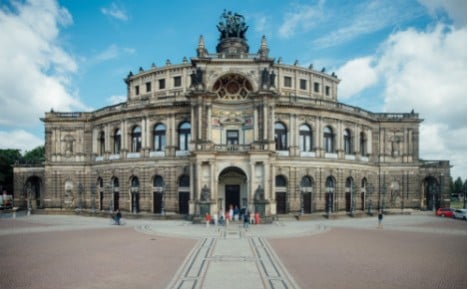 T
T
he Semperoper, Dresden. Photo: DPA
Although Berlin always puts on a big show, a different city officially hosts the ‘Bürgerfest’ each year, which often lasts for several days and celebrates the local region.
The 2021 Bürgerfest is part of a wider exhibition on unity, with a variety of events taking place across the city of Halle in Saxony-Anhalt, in east-central Germany.
By Alexander Johnstone
Comments
See Also
Germany was divided for almost half a century after the Second World War, with the eastern part becoming a socialist ally of the USSR, while the west was a democratic ally of the USA.
On October 3rd, 1990, that finally came to an end when east and west were officially reunified.
1. The fall of the Berlin Wall was an accident
Despite increased pressure on East German authorities to increase freedom of movement between East and West, no-one woke up on November 9th, 1989 expecting to see people tearing down the wall that evening. In fact, on that day the government had decided to placate protesters by announcing new, laxer travel regulations.
But thanks to Günter Schabowski, the newly appointed government spokesman, history took a different turn.
Schabowski had been put in charge of the press conference, but hadn't been properly briefed on what to say.
Asked by a reporter when the regulations were to come into effect - officially on the following day, and the process would include a long visa-application process - he hesitated, before responding: “Ab sofort” – “Right away.”
Within hours, tens of thousands had gathered at the wall, and the rest is history.
2. A former chancellor tried to rob Germans of their day off

Gerhard Schröder and Horst Köhler. Photo: DPA
In 2004, former German Chancellor Gerhard Schröder tried to remove German Unity Day as a national holiday.
In a letter defending the plan, Schröder wrote: “the holiday should not be abolished, but moved to the first Sunday of October every year.”
Citing economic reasons, he explained he was committed to reducing the number of national holidays. Unsurprisingly, this wasn’t a very popular suggestion, and it remained on October 3rd!
3. Bonn remained the seat of government after reunification

View of Bonn. Photo: DPA
Although Berlin had become the federal capital of the new Germany, the government didn’t decide to move the Bundestag (parliament) from Bonn until the following year, and they only just voted in favour of the motion.
On June 20th, 1991, the decision to move to Berlin was approved by 338 votes 320. The Parliament and Chancellery only moved to Berlin in 1999, but some departments and many government officials still operate out of the former West German capital.
4. Reunification almost killed the East German ‘Ampelmännchen’

Traffic psychologist Karl Peglau with his two iconic designs. Photo: DPA
Starting in 1990, there were attempts by the authorities to replace the East German pedestrian crossing lights with standardised ones.
The distinctive man - known as the Amplemännchen and modelled on a photograph of former GDR leader Erich Honecker in a straw hat - became a cult symbol. After a series of protests, the decision was made to keep the 'Ampelmännchen'. It is now also a very successful tourist merchandise range.
5. Unity day was first supposed to be a month later

Germans climbing onto the wall on 9th November, 1989. Photo: DPA
November 9th, the day the Berlin Wall came down was originally proposed as the day of unity.
Despite November 9th being a momentous historical landmark in 1989, it is clear why October 3rd was finally picked instead.
Sometimes referred to as ‘Schicksalstag’ (Fateful Day), November 9th has an eerie connection with major events in German history - not all of them good.
On November 9th, 1918, government minister Philipp Scheidemann proclaimed the creation of the Republic from a balcony in the Berlin Stadtschloss, a crucial act in Germany's transition away from monarchy.
In 1923, November 9th marked the day that Hitler and the NSDAP attempted to take control of Munich, often called the Munich Beer Hall Putsch. And, on the same day in 1938, the Nazi pogrom known as ‘Kristallnacht’ (The Night of Broken Glass) saw Jewish shops and synagogues attacked, and the death of hundreds of Jews.
6. Merkel was working for the socialist government at the time

Former East German Prime Minister Lothar de Maizière and Angela Merkel. Photo: Bundesarchiv / Settnik, Bernd / wikimedia commons
Until 3rd October 1990, Angela Merkel actually worked for the last East German government.
Having joined the political movement ‘Democratic Awakening’ in early 1990, the future Chancellor was later that year appointed deputy spokesperson to Lothar de Maizière, the last leader of East Germany.
7. The West swallowed the East

Grundgesetz - The German Basic Law. Photo: DPA
The reunification of Germany was not legally a merger, but an absorption of the East German states into West Germany.
October 3rd saw the dissolution of the GDR (East Germany), and in accordance with Article 23 of the German Basic Law, each of the five eastern Bundesländer had to vote to join the Federal Republic of Germany. This was chosen in preference over the other option of an official union of the two states, because a speedy unification was seen as vital during this economically unstable time.
8. Britain and France weren't happy

Margaret Thatcher and Helmut Kohl. Photo: DPA
Most of West Germany's allies had officially supported German reunification for decades, but as the GDR's collapse began to look more plausible, many states began to express opposition to the idea, at least in private. Many of western Europe's leaders still feared the resurgence of a powerful unified Germany.
The UK's prime minister at the time was one of the leaders to voice this concern more publicly. In a discussion with Mikhail Gorbachev, Margaret Thatcher stated: “We don’t want a united Germany […] such a development would undermine the stability of the whole international situation”.
The personal advisor to French President Francois Mitterand also shared this opinion: “France by no means wants German reunification.”
9. Putin was a KGB agent in Germany at the time

Putin looks over the River Elbe in Dresden on a return trip. Photo: DPA
From 1985 to 1990, Vladimir Putin served in the local Soviet intelligence office in Dresden. The night the wall fell had a very sudden effect on him, as he recalled to biographers: “I realised that the Soviet Union was ill. It was a fatal illness called paralysis. A paralysis of power.”
Putin still speaks fluent German, even once addressing the Bundestag (German parliament) auf Deutsch.
10. The official celebrations take place in a different city each year
 T
T
he Semperoper, Dresden. Photo: DPA
Although Berlin always puts on a big show, a different city officially hosts the ‘Bürgerfest’ each year, which often lasts for several days and celebrates the local region.
The 2021 Bürgerfest is part of a wider exhibition on unity, with a variety of events taking place across the city of Halle in Saxony-Anhalt, in east-central Germany.
By Alexander Johnstone
Join the conversation in our comments section below. Share your own views and experience and if you have a question or suggestion for our journalists then email us at [email protected].
Please keep comments civil, constructive and on topic – and make sure to read our terms of use before getting involved.
Please log in here to leave a comment.